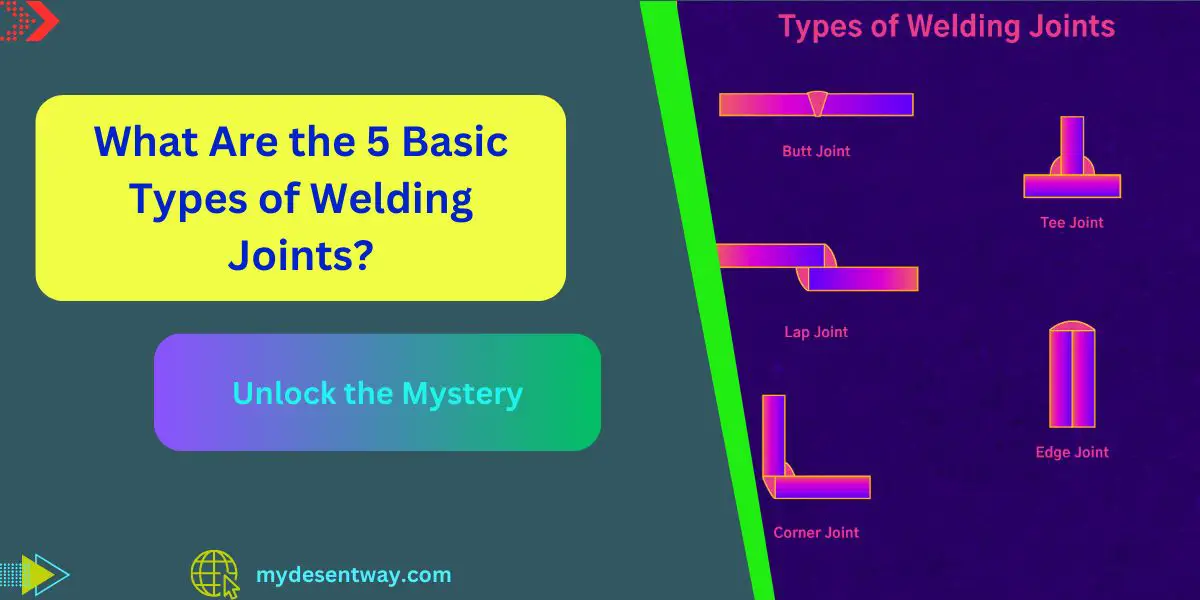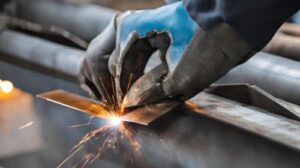Table of Contents
Are you curious about welding and its various techniques? Wondering, What are the 5 basic types of welding joints? You’re in luck! Welding is an indispensable skill in fabrication, construction, and repair works across industries.
Understanding the different types of welding joints is crucial for achieving strong, durable welds. In this article, we’ll delve deep into the realm of welding joints, uncovering their types, applications, and techniques.
Whether you’re a novice welder or a seasoned professional, let’s embark on this journey to master the art of welding joints!
Exploring the Basics
Welding joints serve as the foundation for creating seamless connections between metal components. Each joint type has unique characteristics, applications, and welding methods. So, what are the 5 basic types of welding joints? Let’s break them down:
1. Butt Joint
The butt joint is perhaps the most straightforward type of welding joint, where two pieces of metal are aligned in the same plane and welded together. It’s commonly used in structural welding and pipe fabrication. Key features of butt joints include:
- Minimal material overlap
- Requires precise alignment
- Ideal for joining materials of similar thicknesses
- Welding techniques: Butt welding, groove welding
2. Lap Joint
In lap joints, one metal piece overlaps the other, creating a flush surface for welding. This type of joint is versatile and finds applications in sheet metal fabrication, automotive repairs, and aerospace industries. Here’s what you need to know about lap joints:
- Provides increased surface area for welding
- Offers strength and flexibility
- Suitable for joining materials of varying thicknesses
- Welding techniques: Fillet welding, spot welding
3. Corner Joint
Corner joints are formed when two metal pieces meet at right angles, resembling the corner of a box or frame. These joints are prevalent in structural welding, cabinet making, and frame construction. Here are the key attributes of corner joints:
- Requires precise fitting and alignment
- Offers good mechanical strength
- Often used in load-bearing structures
- Welding techniques: Groove welding, plug welding
4. Tee Joint
Tee joints involve the intersection of two metal pieces at a 90-degree angle, resembling the shape of the letter T. They are widely used in fabricating frames, brackets, and structural connections. Let’s explore the characteristics of tee joints:
- Provides enhanced load-bearing capacity
- Requires proper alignment for optimal strength
- Suitable for both fillet and groove welding
- Welding techniques: Fillet welding, plug welding
5. Edge Joint
Edge joints occur when two metal pieces are aligned edge-to-edge and welded together. This type of joint is commonly used in sheet metal fabrication, box construction, and panel assembly. Here’s what you should know about edge joints:
- Offers a clean and seamless appearance
- Requires precise edge preparation
- Ideal for joining thin materials
- Welding techniques: Butt welding, spot welding
Conclusion
In conclusion, understanding the 5 basic types of welding joints is essential for mastering the art of welding. Whether you’re fabricating a steel structure, repairing a vehicle, or crafting intricate metalwork, choosing the right welding joint and technique is critical for achieving optimal results.
So, the next time you embark on a welding project, remember to consider the type of joint required and select the appropriate welding method. With practice, patience, and attention to detail, you’ll become a proficient welder capable of tackling any challenge that comes your way!
video by ADTW Study
FAQs about What Are the 5 Basic Types of Welding Joints?
As we unravel the mysteries of welding joints, let’s address some common questions:
Which welding technique is best for beginners?
For beginners, fillet welding is often recommended due to its simplicity and versatility. It’s commonly used in lap and tee joints.
Can different types of welding joints be combined in a single project?
Absolutely! Many welding projects involve a combination of joints to meet specific structural or aesthetic requirements.
How crucial is proper joint preparation in welding?
Joint preparation is paramount in welding, as it ensures proper fit-up, penetration, and weld quality. Neglecting joint preparation can lead to weak welds and structural failure.










